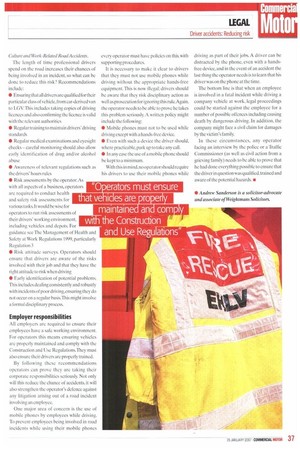Culture and Work-Related Road Accidents.
Page 37

If you've noticed an error in this article please click here to report it so we can fix it.
The length of time professional drivers spend on the road increases their chances of being involved in an incident, so what can be done to reduce this risk? Recommendations include: • Ensuring that all drivers are qualified for their particular class of vehicle, from car-derived van to LGV. This includes taking copies of driving licences and also confirming the licence is valid with the relevant authorities • Regular training to maintain drivers' driving standards • Regular medical examinations and eyesight checks — careful monitoring should also allow early identification of drug and/or alcohol abuse • Awareness of relevant regulations such as the drivers' hours rules • Risk assessments by the operator. As with all aspects of a business, operators are required to conduct health and safety risk assessments for various tasks. It would he wise for operators to run risk assessments of their drivers' working environment, including vehicles and depots. For guidance see The Management of Health and Safety at Work Regulations 1999, particularly Regulation 3 • Risk attitude surveys. Operators should ensure that drivers are aware of the risks involved with their job and that they have the right attitude to risk when driving • Early identification of potential problems. This includes dealing consistently and robustly with incidents of poor driving, ensuring they do not occur on a regular basis.This might involve a formal disciplinary process.






















































































































































































